Complete Solutions to Taking it together of chapter CURRENT ELECTRICITY of Class 12 book with complete answers and questions
| Class 12 | PHYSICS |
| Chapter | CURRENT ELECTRICITY |
| DC PANDEY NEET | Taking it together |
| Number Of Questions | 100 |
| Academic Year | 2023-24 |
What is terminal potential differnce of a cell? Can its value be greater than the emf of a cell? Explian.
View SolutionIdentify the material commonly used for making coil of a resistacne box.
View SolutionWhich of the following is a vector quantity?
View SolutionElectric field (E) and current density `(J)` have relation
View SolutionConsider the following two statements:
(A)Kirchhoff's junction law follows from conservation of charge.
(B)Kirchhoff's loop law follows from conservative nature of electirc field .
View SolutionFor measurement of potential difference, potentiometer is perferred in comparison to voltmeter because
View SolutionWhat is immeterial for an electric fuse wire ?
View SolutionConductivity increases in the order of
View SolutionBy mistake, a voltmeter is connected in series and an ammeter is connected in parallel, with a resistance in an electrical circuit. What will happen to the instruments?
View SolutionIf E is the emf of a cell of internal resistance r and external resistance R, then potential difference across R is given as
View Solutionthe two nonideal batteries are connected in series. Consider the following statements :
(A)The equivalent emf is larger than either of the two emfs.
(B) the equivalent internal resistances is smaller than either of the two internal resistances.
View SolutionWhen n cells are joined in parallel combination as shown, the strength of the current `i` is given by
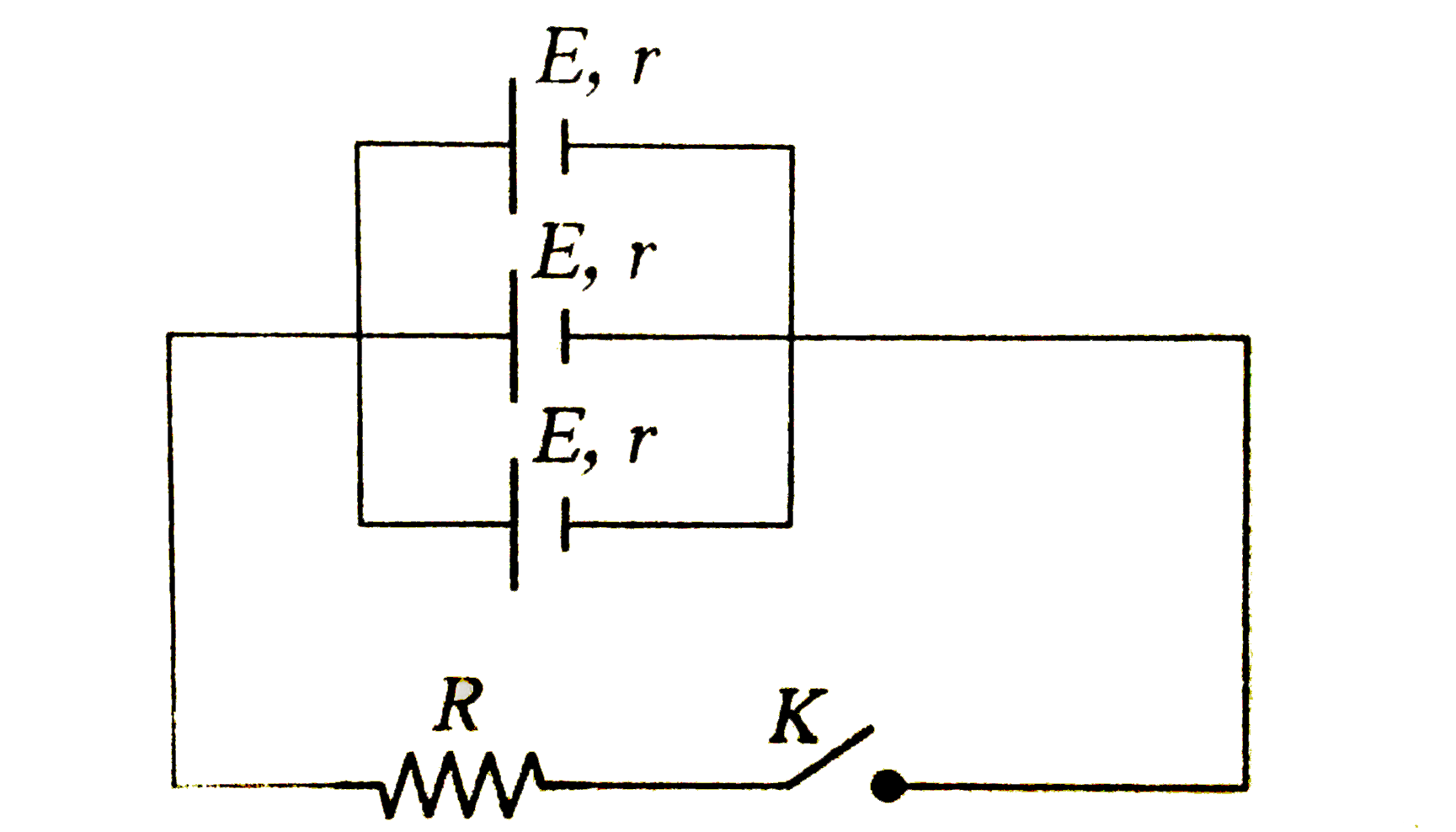
View SolutionA student has 10 resistors of resistance ‘ r ’. The minimum resistance made by him from given resistors is
View SolutionA wire has resistance `12 Omega`. It is bent in the form of a circle. The effective resistance between two points across a diameter is.
View SolutionA stready current i is flowing through a conductor of uniform cross-section. Any segment of the conductor has
View SolutionThere are n cells, each of emf E and internal resistance r, connected in series with an external resistance R. One of the cells is wrongly connected, so that it sends current in the opposite direction. The current flowing in the circuit is
View SolutionThe maximum power dissipated in an external resistance R, when connected to a cell of emf E and internal resistance r, will be
View SolutionThe resistance across A and B in the figure below will be

View SolutionThe temperature (T) dependence of resistivity (rho) of a semiconductor is represented by :
View SolutionThe current (I) and voltage (V) graphs for a given metallic wire at two different temperature `(T_(1))` and `(T_(2))` are shown in fig. It is concluded that
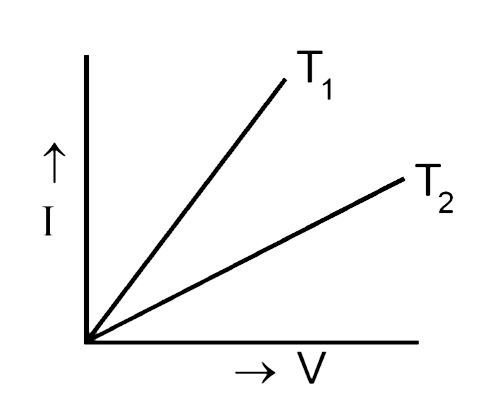
View SolutionWhich of the follwing characteristies of electrons determines the current in a conductor?
View SolutionAn ammeter and a voltmeter of resistance `R` connected in seires to an electric cell of negligible internal resistance. Their readings are `A` and `V` respecitvely. If another resistance `R` is connected in parallel with the voltmeter
View SolutionThe resistance of a wire is `10 Omega`. Its length is increased by `10%` by stretching. The new resistance will now be
View SolutionFour resistances are connected in a circuit in the given figure. The electric cirrent flowing through `4 ohm` and `6 ohm` resistance is respectively

View SolutionCurrent through the `5Omega` resistor is

View SolutionA cell which has an emf `1.5` V is connectedin series with an external resistance of `10Omega`. If the potential difference across the cell is `1.25` V, then the internal resistance of the cell is `("in" Omega)`
View SolutionA piece of wire of resistance 4 ohm s is bent through `180^(@)` at its mid point and the two halves are twisted together, then the resistance is
View SolutionA wire of resistance `R` is divided in 10 equal parts. These parts are connected in parallel, the equivalent resistance of such connection will be
View SolutionThree resistors each of 2 ohm are connected together in a triangular shape. The resistance between any two vertices will be
View SolutionThe effective resistance between the points A and B in the figure is
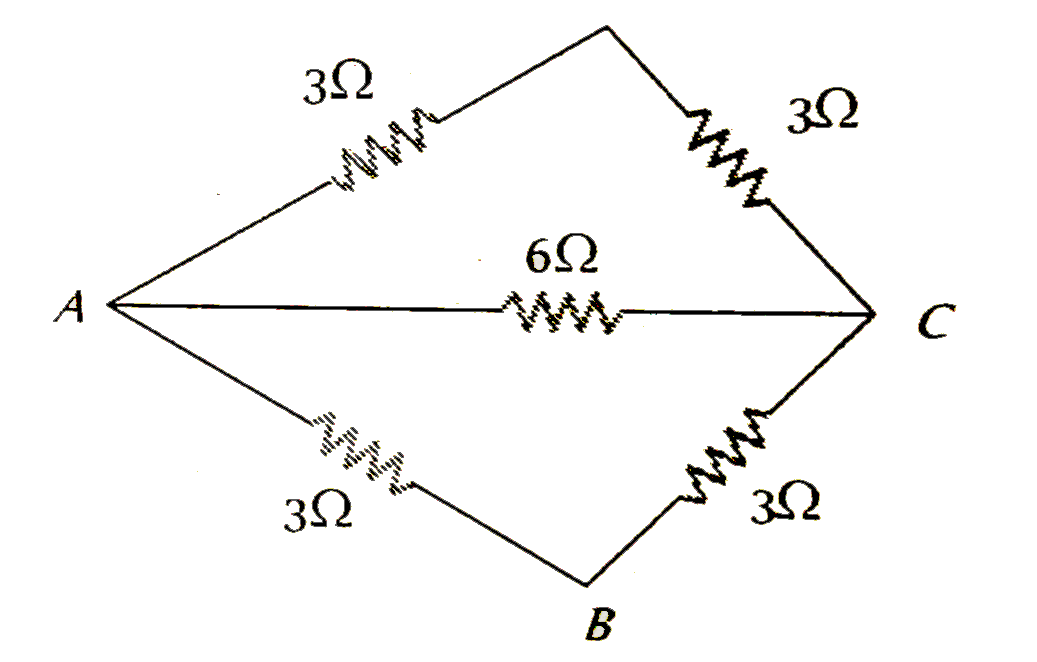
View SolutionTwo resistances are joined in parallel whose resultant is `6//8 ohm`. One of the resistance wire is broken and the effective resistance becomes `2 Omega` . Then the resistance in ohm of the wire that got broken was
View SolutionA wire of resistanc e`9Omega` is broken in two parts. The length ratio being `1:2`. The two pieces are connected in parallel. The net resistance will be
View SolutionIn the network shown, the equivalent resistance between A and B is
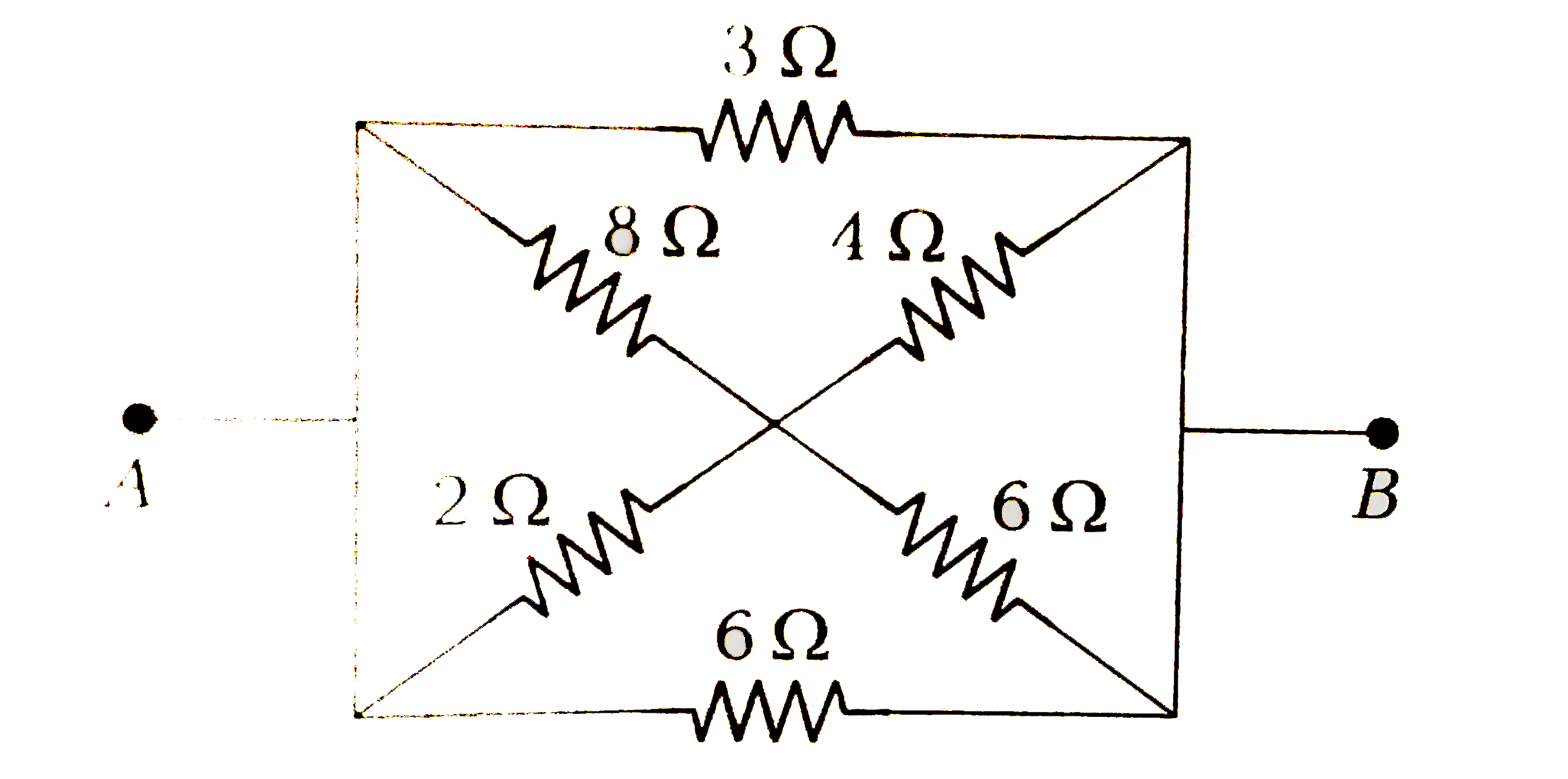
View SolutionIn the circuit shown, the currents `i_(1)` and `i_(2)` are
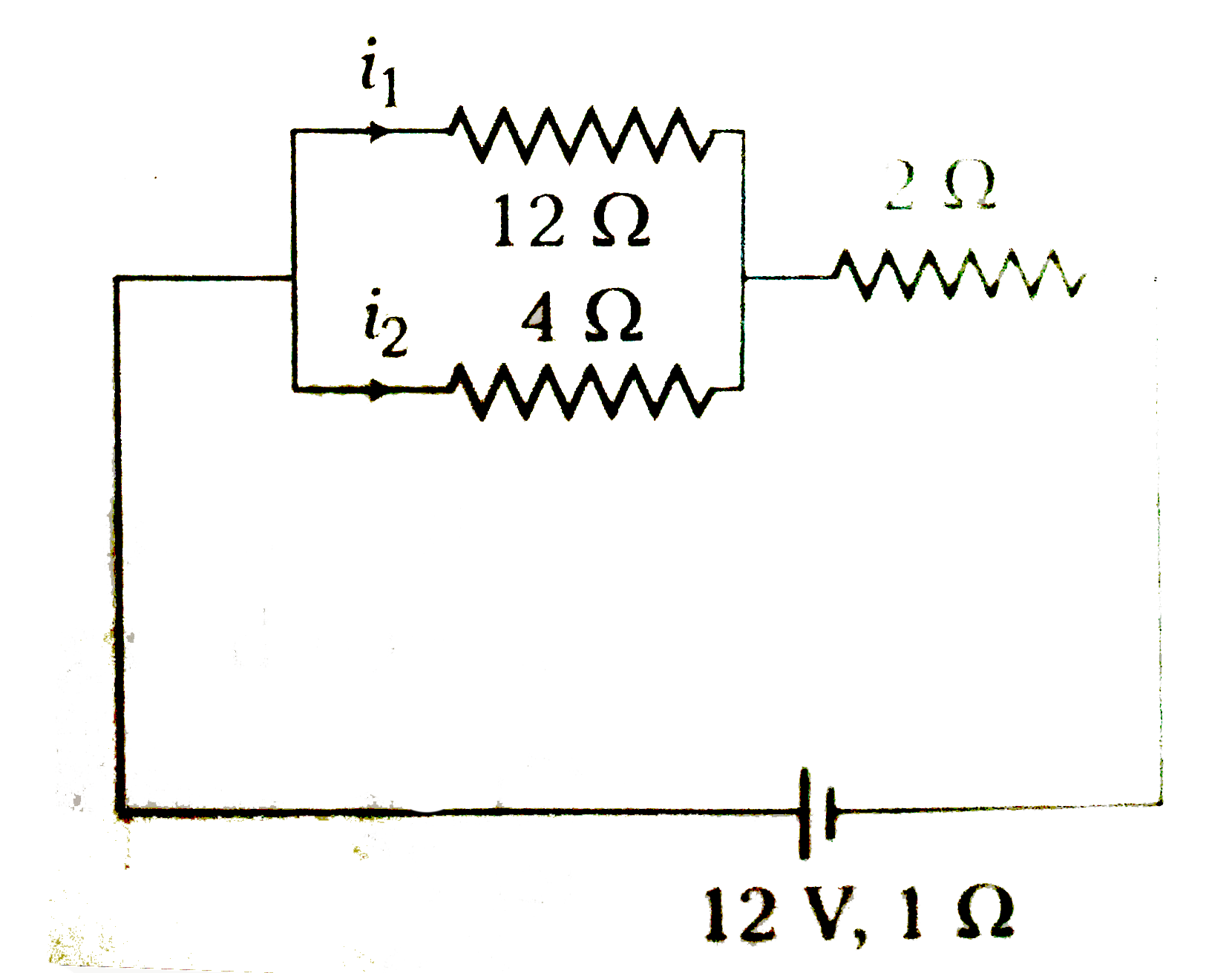
View SolutionConsider the following statements regarding the network shown in the figure.
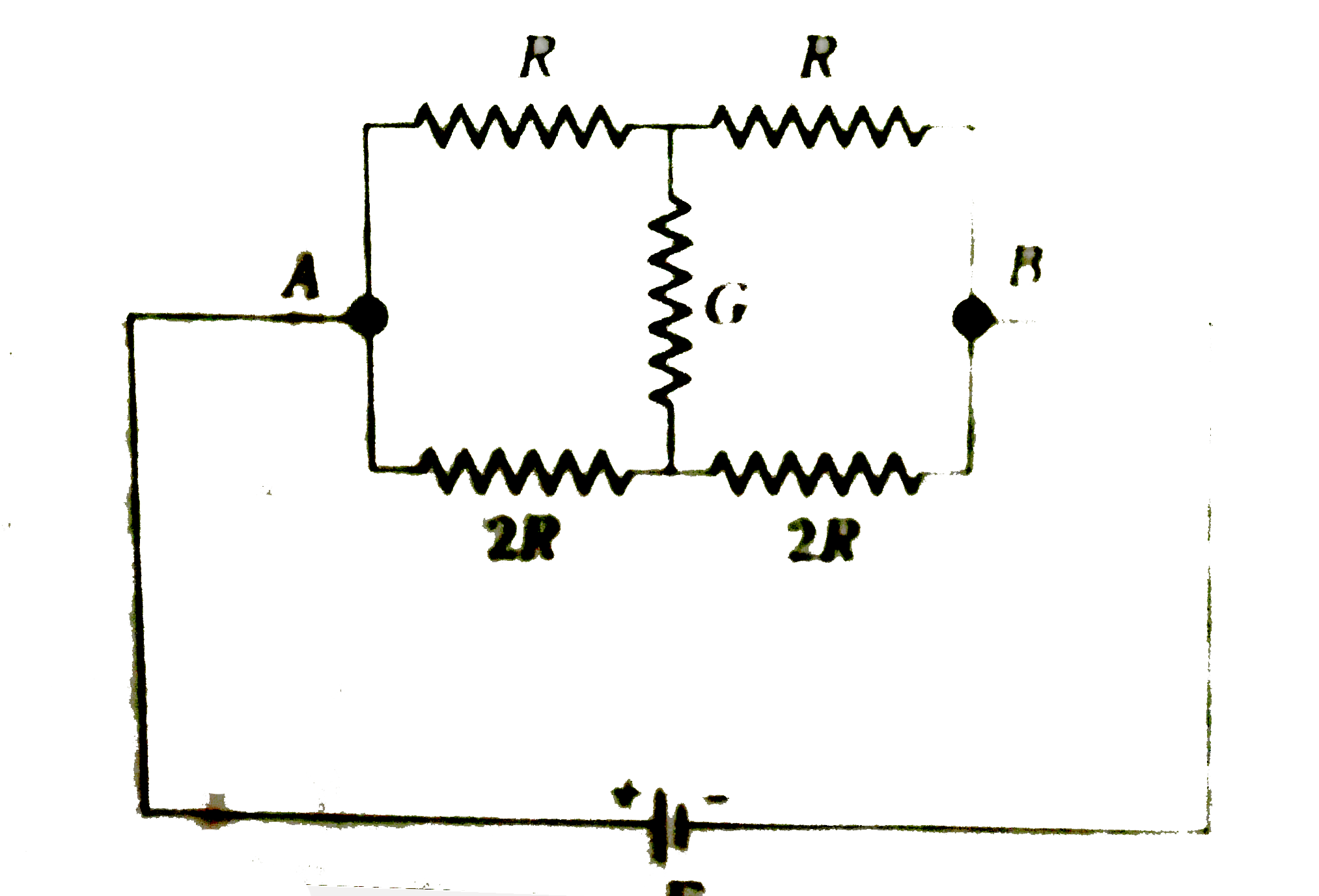
The eqivalent resistance of the network between points A and B is independent of value of G.
The equivalent resistance of the network between points A and B is `4//3R`.
The current through G is zero.
Which of the above statements(s) is/are true?
View SolutionTo send 10% of the main current through a moving coil galvanometer of resistance `99Omega`, the shunt required is –
View SolutionA 1250 W heater operates at `115V`. What is the resistance of the heating coil?
View SolutionThe resistance of a wire at `20^(@)C` is `20Omega` and at `500^(@)C` is `60Omega`. At which temperature its resistance will be `25Omega`?
View SolutionA conducting wire of cross-sectional area `1 cm^(2)` has `3 xx 10^(23)` charge carriers per m3. If wire carries a current of `24 mA`, then drift velocity of carriers is
View SolutionAt room temperature, copper has free electron density of `8.4xx10^(28)"m"^(-3)`. The electron drift velocity in a copper conductor of cross - sectional area `10^(-6)m^(2)` and carrying a current of 5.4A, will be -
View Solution`A, B` and `C` are voltmeters of resistances `R, 1.5R` and `3R` respectively. When some potential difference is applied between `x` and `y` the voltmeter readings are `V_A, V`_B`and `V_C,` then
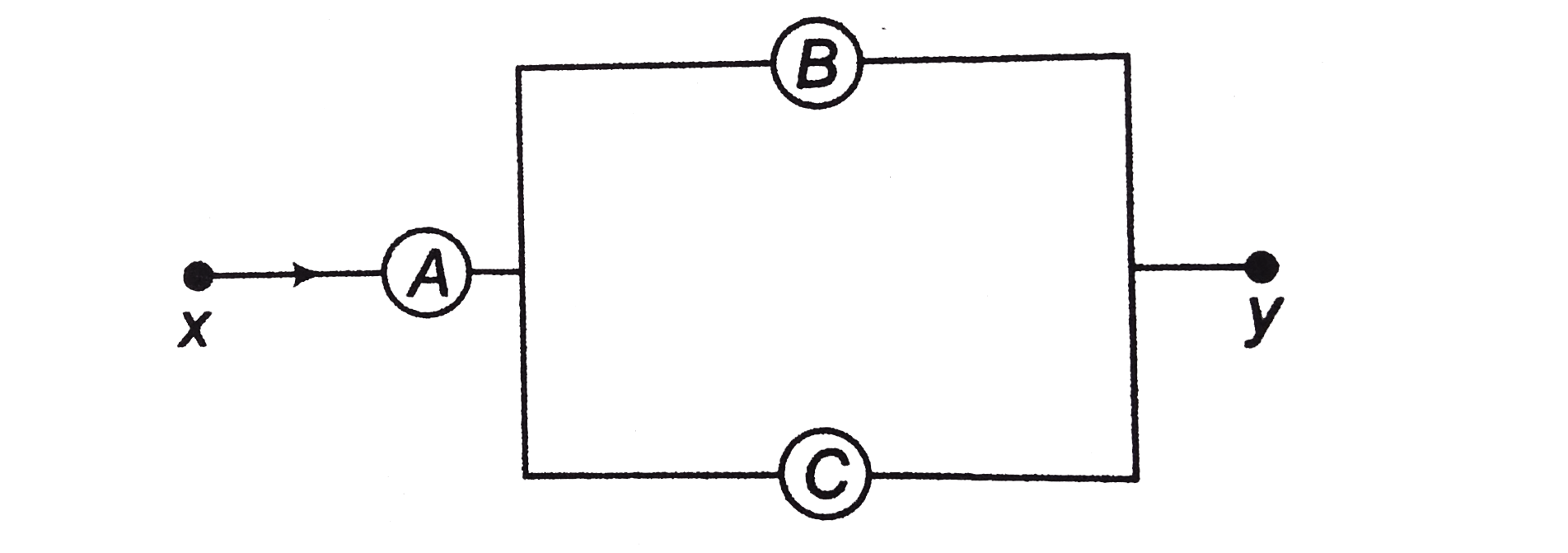
View SolutionA metel rod of the length 10cm and a rectangular cross-section of 1 cm xx `1//2` cm is connected to a battery across opposite faces. The resistance will be
View SolutionTwo cells of emfs approximately `5V and 10V` are to be accurately compared using a potentiometer of length 400cm
View SolutionThe resistivity of a potentiometer wire is `40xx10^(-8)Omega-m` and its area of cross section is `8xx10^(-6)m^(2)`. If 0.2 A current is flowing through the wire the potential gradient will be
View SolutionTwo cells of emfs `E_(1)` and `(E_(2) (E_(1) gt E_(2))` are connected as shows in Fig. `6.45`.

When a potentiometer is connected between `A` and `B`, the balancing length of the potentiometer wire is `300 cm`. On connecting the same potentiometer between `A` and `C`, the balancing length is `100 cm`. The ratio `E_(1)//E_(2)` is
View SolutionA voltmeter of resistance `998 Omega` is connected across a cell of emf 2 V and internal resistance `2 Omega`. Find the p.d. across the voltmeter, that across the terminals of the cell and percentage error in the reading of the voltmeter.
View SolutionA wire of 50 cm long, `1mm^(2)` in cross-section carries a current of 4 A, when connected to a 2 V battery, the resistivity of wire is
View SolutionThree resistance `P, Q, R` each of `2 Omega` and an unknown resistance `S` from the four amrs of a Wheatstone's bridge circuit. When a resistance of `6 Omega` is connected in parallel to `S` the bridge gets balanced. What is the value of `S` ?
View SolutionA 2 V battery, a `990Omega` resistor and a potentiometer of 2 m length, all are connected in series of the resistance of potentiometer wire is `10Omega`, then the potential gradient of the potentiometer wire is
View SolutionThe electron with change `(q=1.6xx10^(-19)C)` moves in an orbit of radius `5xx10^(-11)`m with a speed of `2.2xx10^(6)ms^(-1)`, around an atom. The equivalent current is
View SolutionTwo resistance wires on joining in parallel the resultant resistance is ohms `(6)/(5)` ohms. One of the wire breaks, the effective resistance is 2 ohms . The resistance of the broken wire is
View SolutionA potentiometer having the potential gradient of `2 mV//cm` is used to measure the difference of potential across a resistance of `10 ohm`. If a length of `50 cm` of the potentiometer wire is required to get null point, the current passing through the `10 ohm` resistor is (in `mA`)
View SolutionThe `n` rows each containinig `m` cells in series are joined parallel. Maximum current is taken from this combination across jan external resistance of `3 Omega` resistance. If the total number of cells used are 24 and internal resistance of each cell is `0.5 Omega` then
View SolutionA `100 V` voltmeter of internal resistance `20 k Omega` in series with a high resistance `R` is connected to a `110 V` line. The voltmeter reads `5 V`, the value of `R` is
View SolutionA cell supplies a current `i_(1)` trhough a resistnace `R_(1)` and a current `i_(2)` through a resistance `R_(2)`. The internal resistance of this cell is
View SolutionOut of five resistance of `ROmega` each 3 are connected in parallel and are joined to the rest 2 in series. Find the resultant resistance.
View SolutionTwo batteries A and B each of e.m.f. 2 V are connected in series to an external resistance R = 1 ohm . If the internal resistance of battery A is 1.9 ohms and that of B is 0.9 ohm , what is the potential difference between the terminals of battery A

View SolutionFor a cell of e.m.f. 2 V , a balance is obtained for 50 cm of the potentiometer wire. If the cell is shunted by a `2Omega` resistor and the balance is obtained across 40 cm of the wire, then the internal resistance of the cell is
View SolutionAB is a potentiometer wire of length 100 cm and its resistance is `10Omega`. It is connected in series with a resistance R = 40 `Omega` and a battery of emf 2 V and negligible internal resistance. If a source of unknown emf E is balanced by 40 cm length of the potentiometer wire, the value of E is
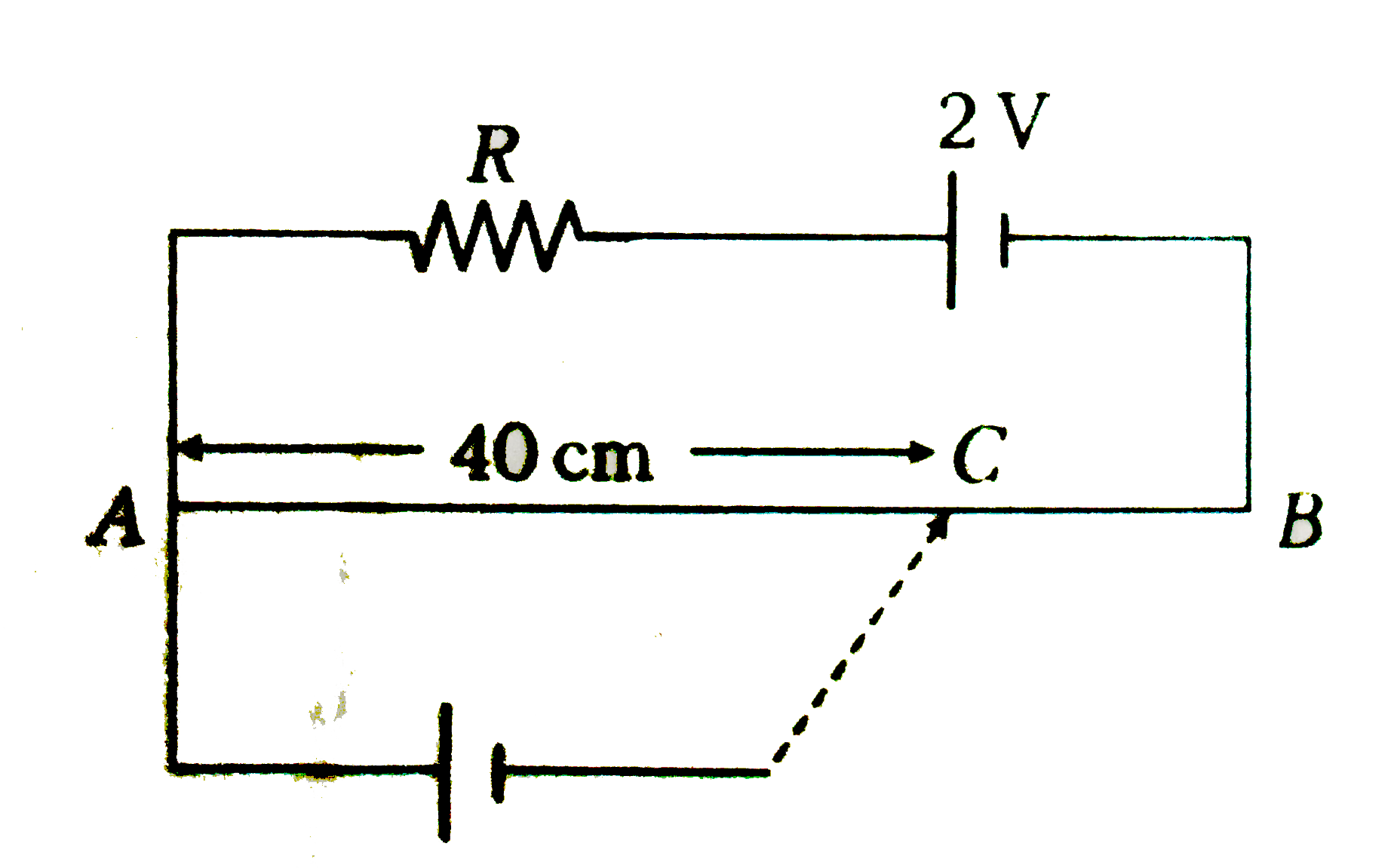
View SolutionEquivalent resistance between the points `A` and `B` (in `Omega`)
 .
.
View SolutionIn the circuit shown here, what is the value of the unknown resistor R so that the total resistance of the circuit between points P and Q is also equal to R

View SolutionTwo wire of the same meta have same length, but their cross-sections are in the rati `3:1` . They are joined in series. The resistance of thicker wire is `10Omega` . The total resistance of the combination will be
View SolutionThe masses of the three wires of copper are in the ratio `5:3:1` and their lengths are in the ratio `1:3:5`. The ratio of their electrical resistances is
View SolutionIf power dissipated in the `9 Omega` resistor in the resistor shown is `36 W`, the potential difference across the `2 Omega` resistor is
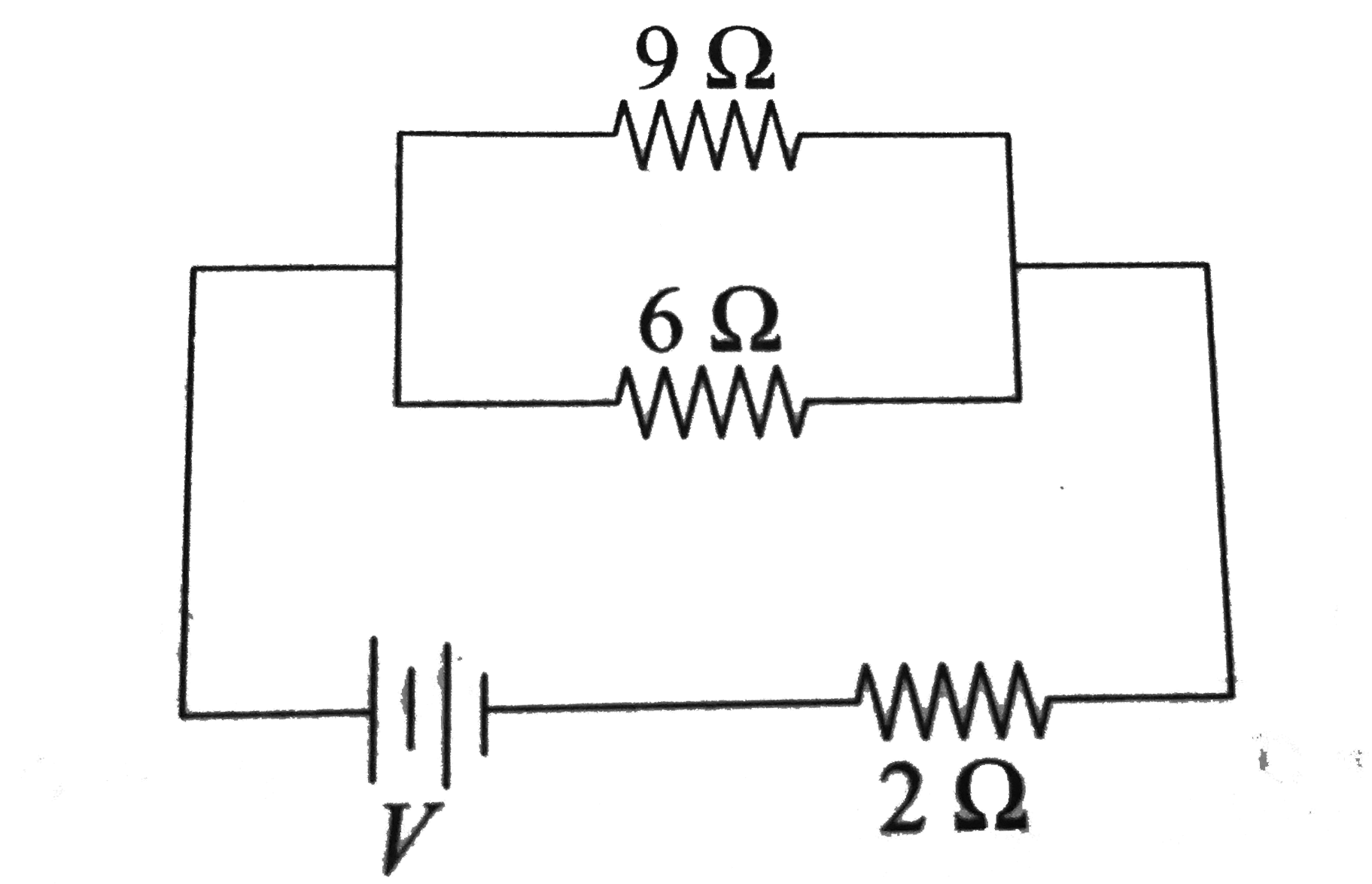
View SolutionThe reading of the ammeter in the following figure will be

View SolutionA wire of length 100 cm is connected to a cell of emf 2 V and negligible internal resistance. The resistance of the wire is `3 Omega`. The additional resistance required to produce a potential drop of 1 milli volt per cm is
View SolutionTwo uniform wires `A` and `B` are of the same total metal and have equal masses. The radius of wire `A` is twice that of wire `B`. The total resistance of `A` and `B` when connected in parallel is
View SolutionIn the given circuit, the resistances are given in ohm. The current through the `10Omega` resistance is 3 A while that through the resistance X is 1 A. No current passes through the galavanometer. The values of the unknown resistances X and Y are respectively (in ohm)

View SolutionThe current I drawn from the 5 volt source will be

View SolutionThe current in the given circuit is

View SolutionTwo resistors `400Omega` and `800Omega` are connected in series with a `6V` battery. It is desired to measure the current in the circuit. An ammeter of `10Omega` resistance is used for this purpose figure. What will be the reading in the ammeter? Similarly, if a voltmeter of `10,000Omega` resistance is used to measure the potential difference across the `400Omega` resistor, what will be the reading in the voltmeter?
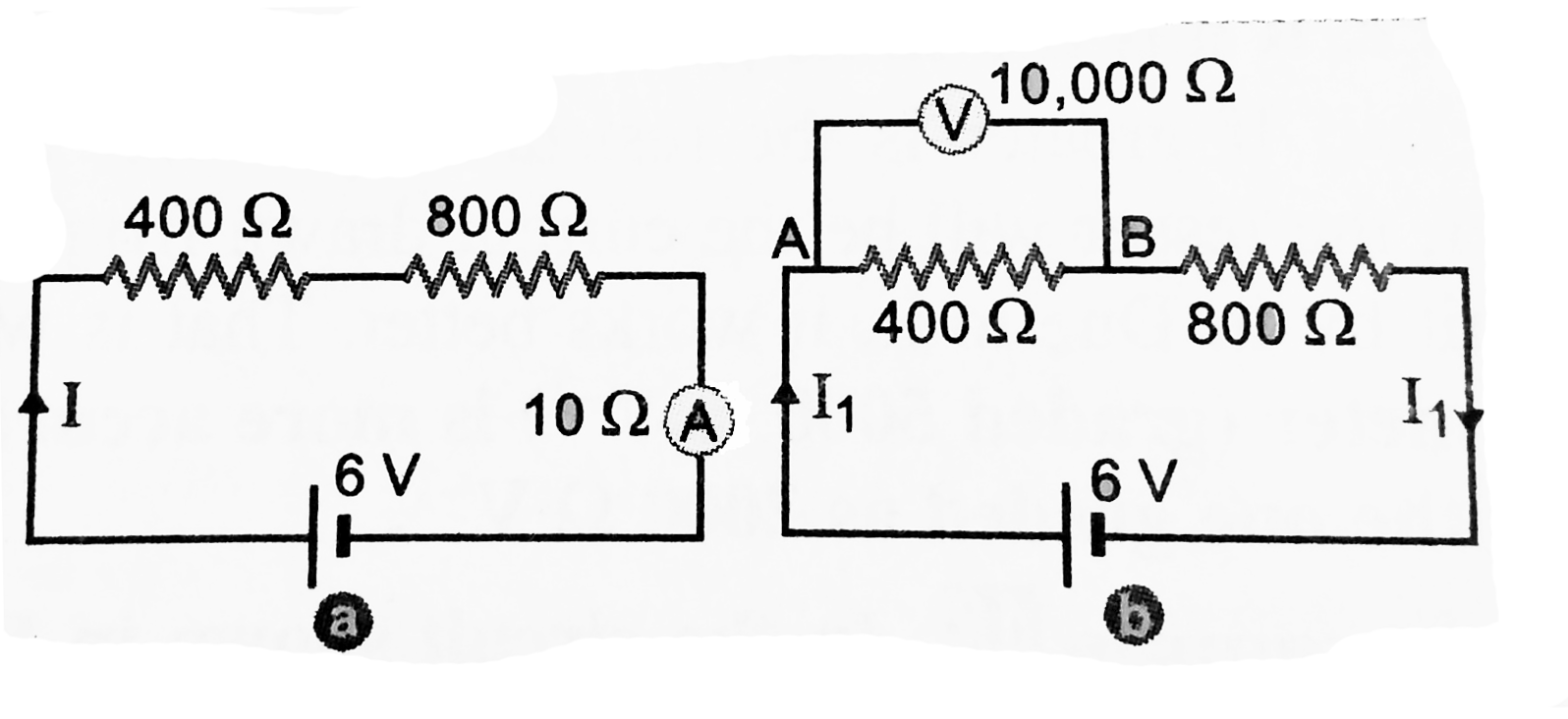
View SolutionA battery of emf E has an internal resistance r. A variable resistacne R is connected to the terminals of the battery. A current `i` is drawn from the battery. V is the terminal potential difference. If R alone is gradually reduced to zero, which of the following best describes `i` and V?
View SolutionTwo resistances are connected in the two gaps of a meter bridge. The balance point is `20 cm` from the zero end. When a resistance `15 Omega` is connected in series with the smaller of two resistance, the null point+ shifts to `40 cm`. The smaller of the two resistance has the value.
View SolutionA battery of four cells in series, each having an emf of `1.14` V and an internal resistance of `2Omega` is to be used to charge a small 2 V accumulator of negligible internal resistance. What is the charging current?
View SolutionThe length of a wire of a potentiometer is 100 cm, and the e.m.f. of its standard cell is E volt. It is employed to measure the e.m.f. of a battery whose internal resistance is `0.5 Omega`. If the balance point is obtained at I = 30 cm from the positive end, the e.m.f. of the battery is .
where i is the current in the potentiometer wire.
View SolutionWhen a resistance of 100`Omega` is connected in series with a galvanometer of resistance R, then its range is V. To double its range, a resistance of 1000`Omega` is connected in series. Find the value of R.
View SolutionTwo cells, having the same emf, are connected in series through an external resistance `R`. Cells have internal resistance `r_(1)` and `r_(2) (r_(1) gt r_(2))` respectively. When the circuit is closed, the potentail difference across the first cell is zero the value of `R` is
View SolutionTwo wires of the same material but of different diameters carry the same current `i`. If the ratio of their diameters is `2:1` , then the corresponding ratio of their mean drift velocities will be
View SolutionTwo bulbs consume same energy when operated at `200 V and 300 V` , respectively . When these bulbs are connected in series across a dc source of `500 V`, then
View SolutionA factory is served by a 220 V supply line. In a circuit protected by a fuse marked 10 A, the maximum number of 100 W lamps in parallel that can be turned on, is
View SolutionTwo bulbs 60 W and 100 W designed for voltage 220 V are connected in series across 220 V source. The net power dissipated is
View SolutionA tap supplies water at `22^(@)C`, a man takes 1 L of water per min at `37^(@)C` from the geyser. The power of geyser is
View SolutionThe mean free path of electrons in a metal is `4 xx 10^(-8)m` The electric field which can give on an average `2eV` energy to an electron in the metal will be in the units `V//m`
View SolutionYou are given two resistances `R_(1)` and `R_(2)`. By using them singly, in series and in parallel, you can obtain four resistances of `1.5Omega, 2Omega, 6Omega` and `8Omega`. The value of `R_(1)` and `R_(2)` are
View SolutionA potentiometer having the potential gradient of `2 mV//cm` is used to measure the difference of potential across a resistance of `10 ohm`. If a length of `50 cm` of the potentiometer wire is required to get null point, the current passing through the `10 ohm` resistor is (in `mA`)
View SolutionIn the circuit shown in the figure,
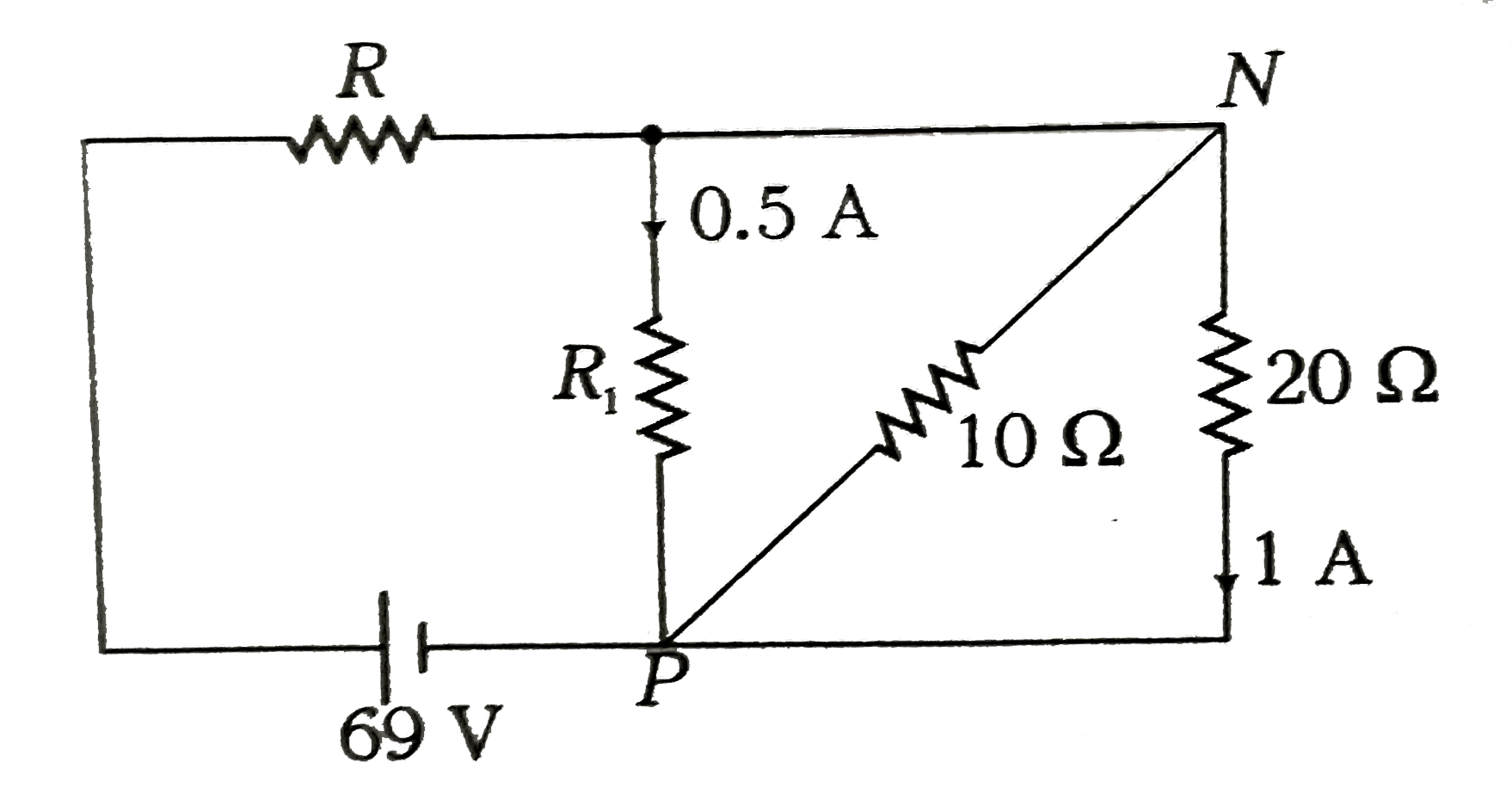
View SolutionA galvanometer of resistance `50 Omega ` is connected to a battery of `3 V` along with resistance of `2950 Omega` in series. A full scale deflection of 30 divisions is obtained in the galvanometer. In order to reduce this deflection to 20 division the above series resistance should be
View SolutionWhen a galvanometer is shunted by resistance S, then its current capacity increases n times. If the same galvanometer is shunted by another resistance S', then its current capcity will increase by n' is given by
View SolutionThe tungsten filaments of two electric bulbs are of the same length. If one of them gives 25 W power and the other 60 W power, then
View SolutionThree unequal resistor in parallel are equivalent to a resistance `1` ohm If two of them are in the ratio `1:2` and if no resistance value is fractional the largest of three resistance in ohm is
View SolutionIn the network shown, points A, B and C have potentials of 70 V, zero and 10V respectively
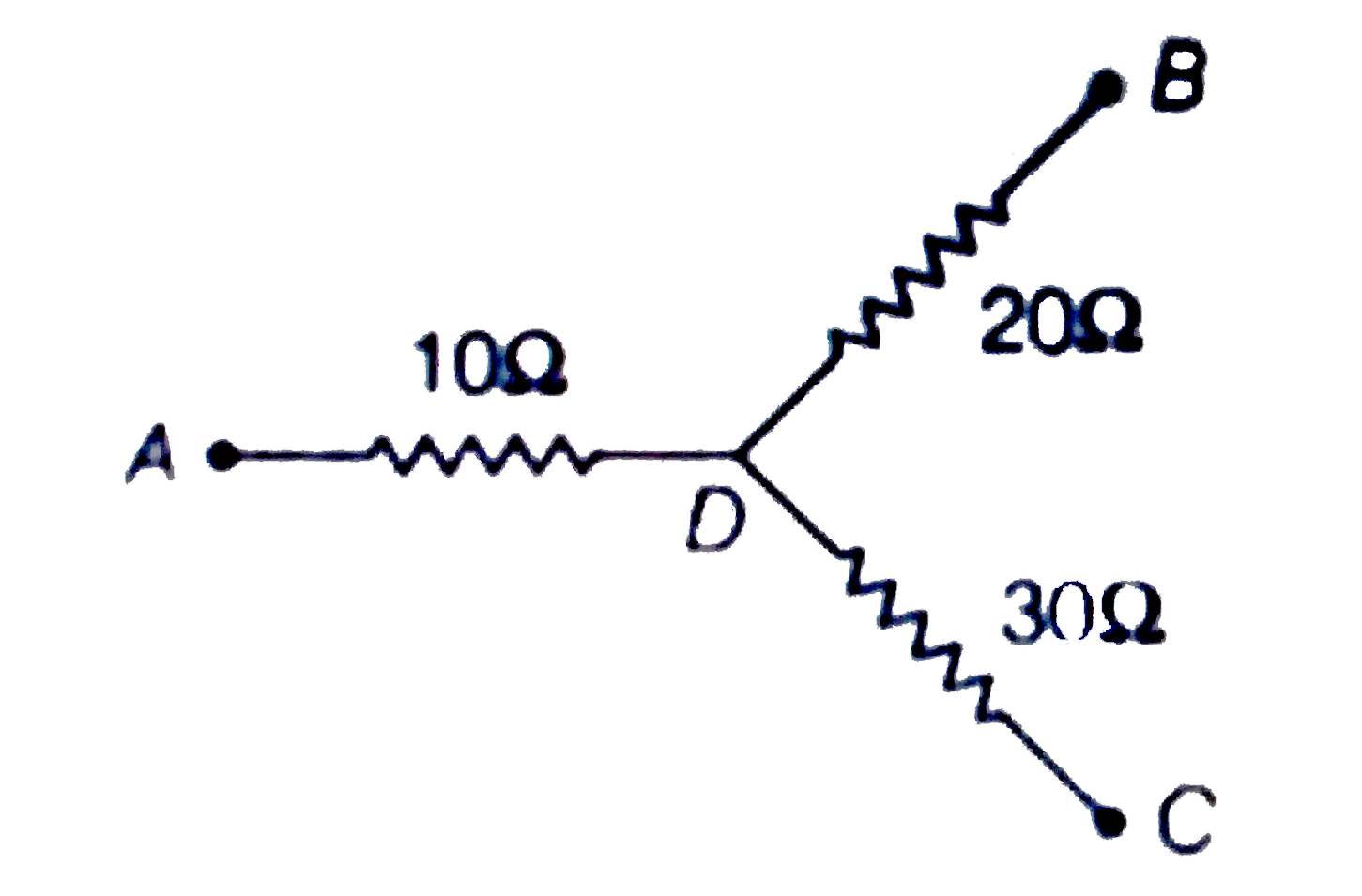
View SolutionThe current in the resistance R will be zero if

View SolutionIn the circuit shown in fig. the magnitdues and the direction of the flow of current, respectively, would be
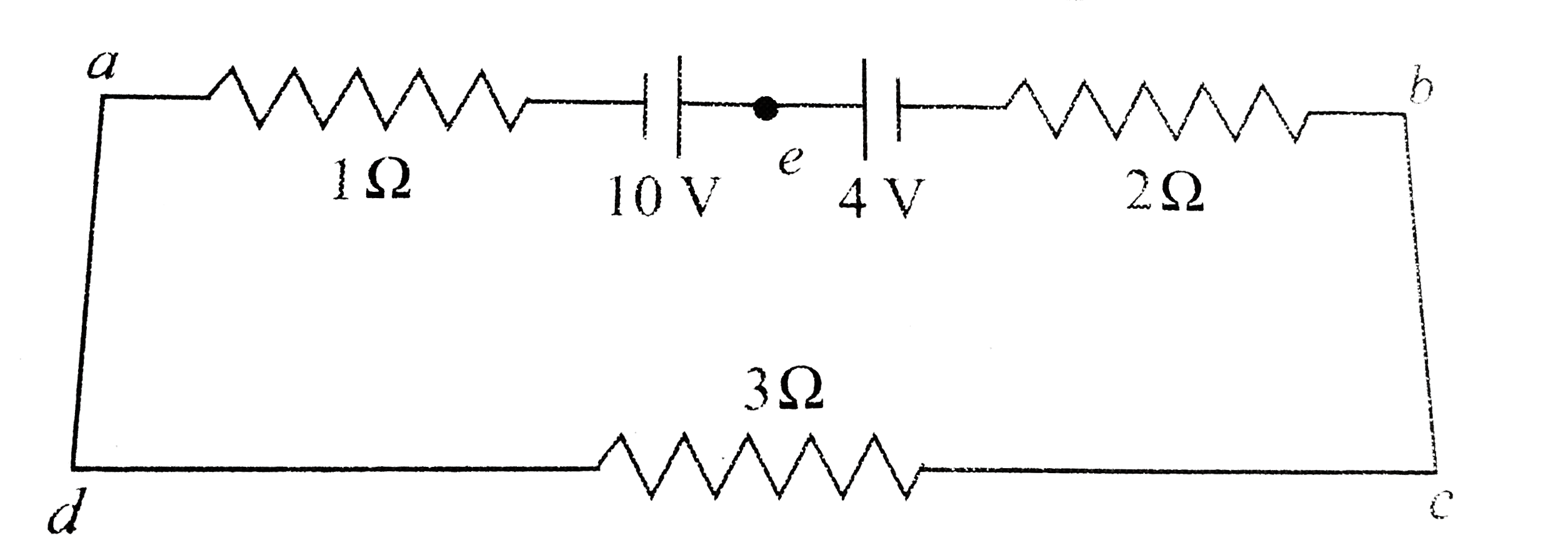
View SolutionConsider a current carrying wire (current I) in the shape of a circle. Note that as the current progresses along the wire, the direction of `vecJ` (current density) changes in an exact manner, while the current I remains unaffected. The agent that is essentially responsible for is
View SolutionTwo batteries of emf `epsilon_(1)` and `epsilon_(2) (epsilon_(2)gtepsilon_(1)` and internal resistances `r_(1)` and `r_(2)` respectively are connected in parallel as shown in Fig. 2 (EP).1.
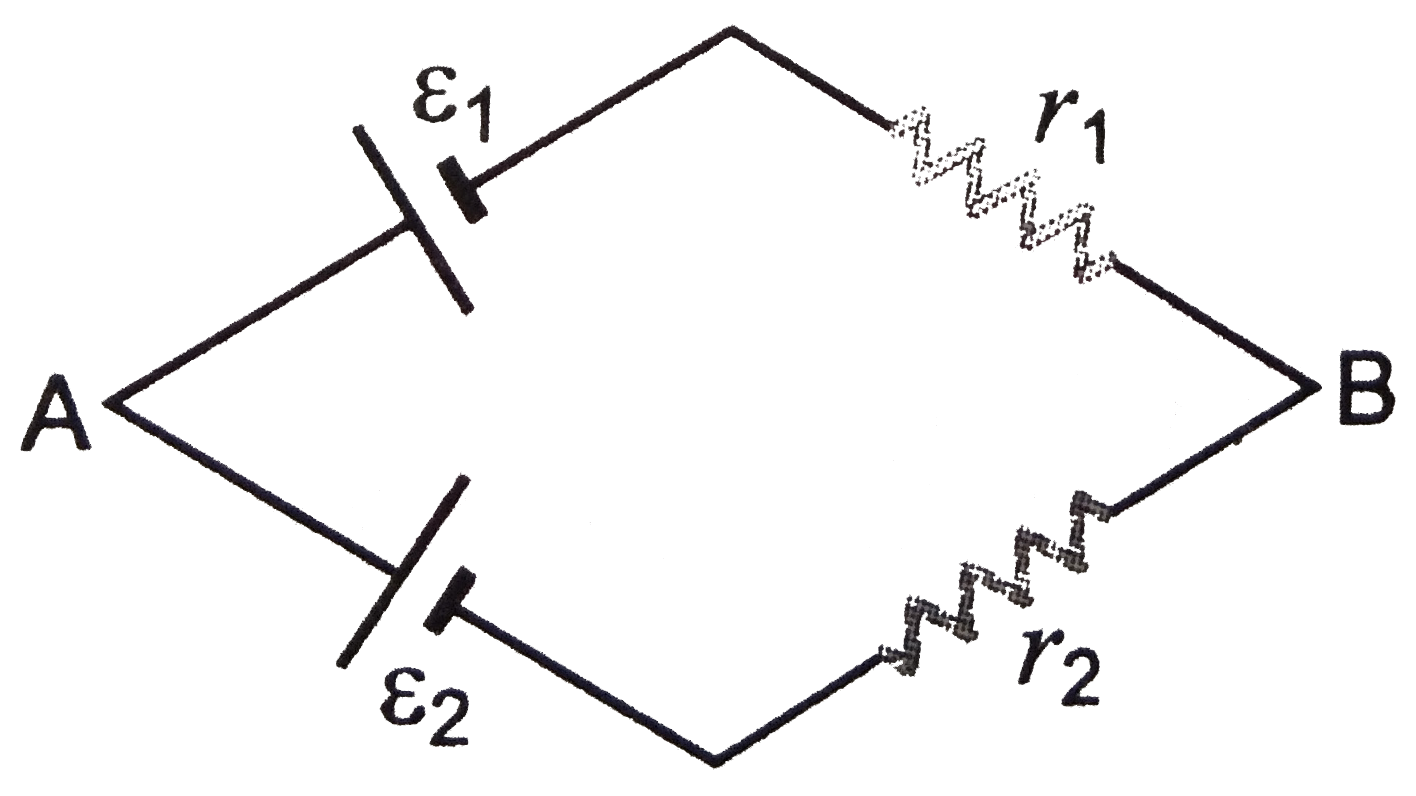
View SolutionA resistance R is to be measured using a meter bridge. Student chooses the standard resistance S to be `100 Omega`. He finds the null point at `l_(1)=2.9cm`. He is told to attempt to improve the accuracy. Which of the following is a useful way?
View SolutionThe current drawn from the battery shown in the figure is l =
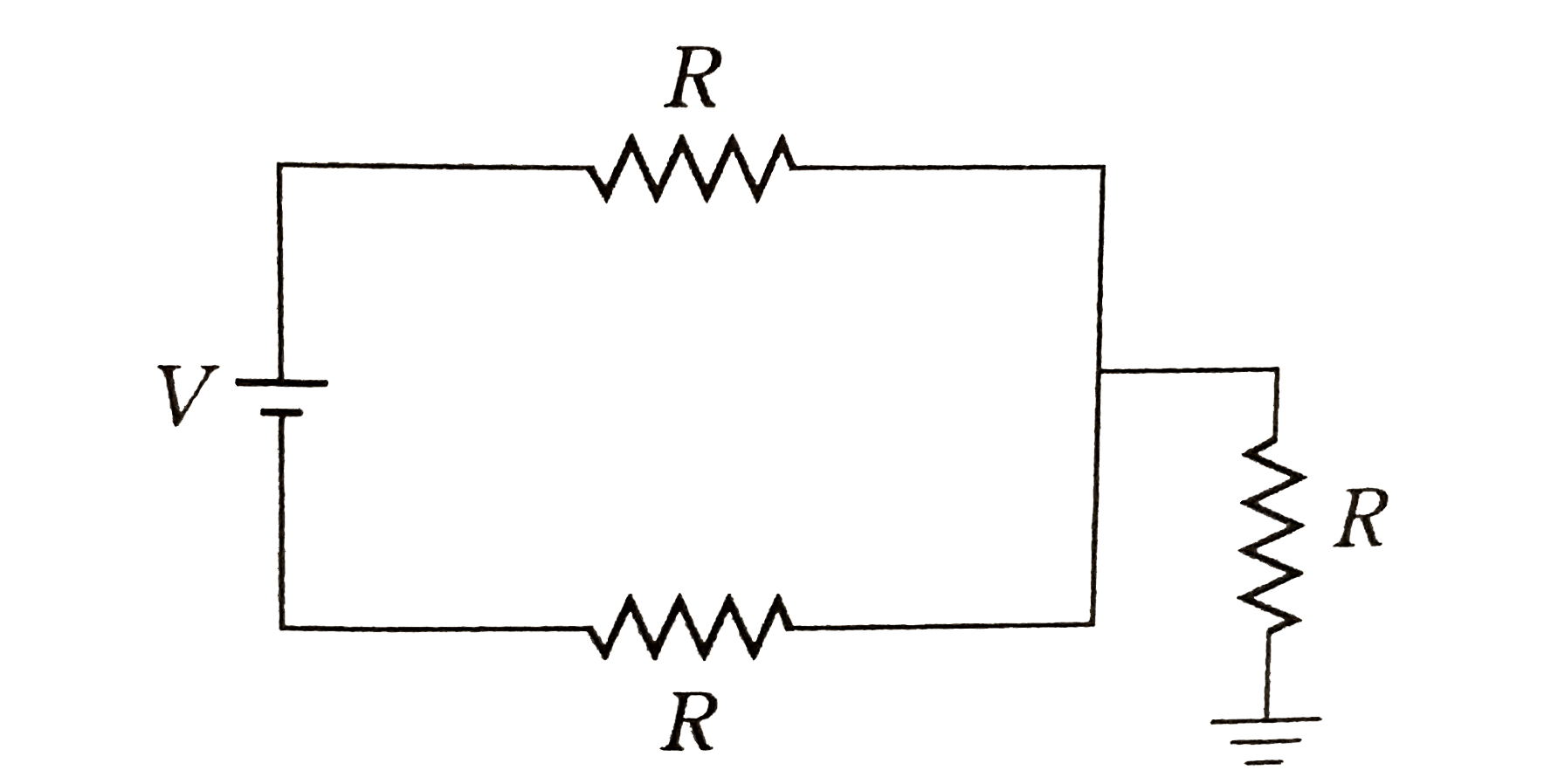
View SolutionTwo nonideal batteries are connected in parallel. Consider the following statements:
(A)The equivalent emf is smaller than either of the two emfs.
(B) The equivalent internal resistance is smaller than either of the two internal resistances.
View SolutionIn the adjoining circuit, the battery `E_(1)` has an e.m.f me of 12 volt and zero internal resistance while the battery E has an e.m.f me of 2volt . If the galvanometer G reads zero, then the value of the resistance X in ohm is
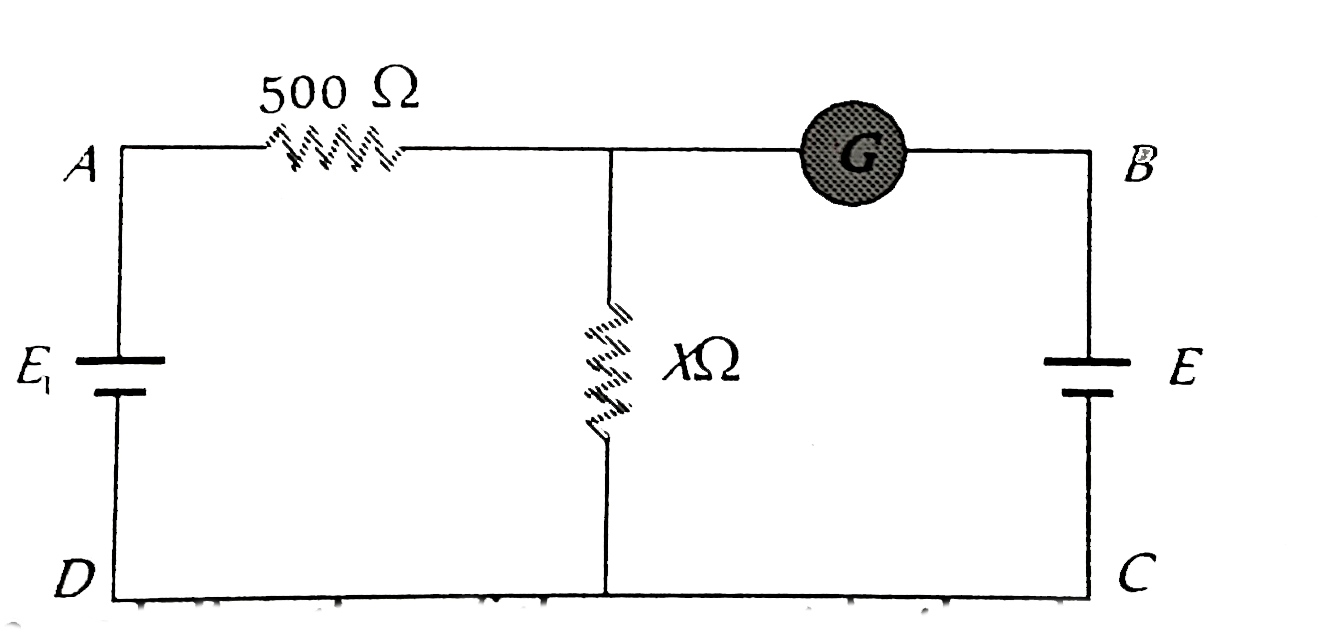
View SolutionThe potential drop across the `3 Omega` resistor is

View Solution
Taking it together questions and complete solutions for chapter CURRENT ELECTRICITY of DC PANDEY ENGLISH of Class 12
All Exercises from DC PANDEY NEET Class 12 PHYSICS CURRENT ELECTRICITY
- B. Assertion and reason
- Check point
- Example
- Example Example Type
- Example Type 1
- Example Type 2
- Example Type 3
- Example Type 4
- Example Type 5
- Example Type 6
- Exercise 23.1
- Exercise 23.10
- Exercise 23.11
- Exercise 23.12
- Exercise 23.13
- Exercise 23.2
- Exercise 23.3
- Exercise 23.4
- Exercise 23.5
- Exercise 23.6
- Exercise 23.7
- Exercise 23.8
- Exercise 23.9
- Level 1 Assertion And Reason
- Level 1 Objective
- Level 1 Subjective
- Level 2 Comprehension Example Type
- Level 2 More Than One Correct
- Level 2 Single Correct
- Level 2 Subjective
- Match the columns
- Medical entrances gallery
- Miscellaneous Examples
- OBJECTIVE_TYPE
- Taking it together